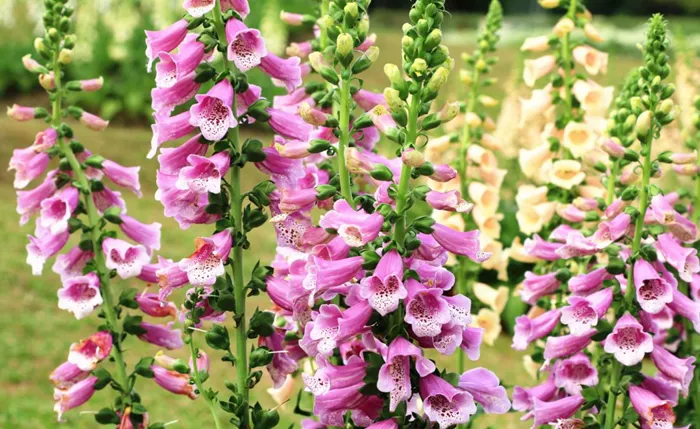Picture yourself strolling through your garden on a breezy spring morning, the soft purple flowers of foxglove swaying gently around you. These stunning blooms do more than catch your eye—they’re a hidden ally in your garden’s natural defense system. While many focus on their beauty, foxgloves also offer incredible benefits for pest control, changing the way you think about gardening.
The Secret Helpers of Your Garden Beds
Foxgloves (Digitalis purpurea) are not just lovely flowers; they also create a thriving ecosystem that helps manage pests naturally. According to Dr. Eleanor Marsh, an expert in ecological gardening, “The flowers’ tubular shape attracts beneficial insects that feed on common garden pests. They act as a natural pest control system, inviting good insects to manage the bad ones.”
Foxgloves attract long-tongued bees and other pollinators, which are also natural predators of garden pests. By encouraging these beneficial insects, you’re building a sustainable system much like how mulching or cardboard helps manage weeds without chemicals.
How Foxgloves Create Balance in the Garden
Foxgloves bring harmony to your garden the way a well-conducted orchestra brings music to life—each element contributes to the bigger picture. These flowers increase biodiversity, which plays a key role in controlling pests without needing harmful chemicals. Just as a little patience helped Bella the dog transform into a therapy companion, carefully tending to your garden’s ecology can turn your space into a thriving environment.
Why Experienced Gardeners Love Foxgloves
Master gardener Thomas Reynolds has used foxgloves in gardens for over 15 years. He says, “The difference in pest management is striking. Gardens with foxgloves generally need 60% less intervention for pests like aphids and caterpillars.” This natural resilience mirrors the story of the 31-pound cat who defied medical expectations, showing that with the right tools, your garden can thrive without constant maintenance.
How to Plant Foxgloves for Maximum Effectiveness
To make the most of foxgloves for pest control, here are some helpful planting tips:
- Plant foxgloves in clusters of 3-5 plants near vegetable patches.
- Place them along garden borders to act as natural barriers.
- Intermix them in rose gardens to reduce aphid populations.
- Pair them with herbs like rosemary and thyme to increase protection.
Other Benefits of Foxgloves in Your Garden
Foxgloves offer more than just pest control. Once established, they provide:
- Drought tolerance.
- Self-seeding for a continuous garden presence.
- Vertical structure and interest for your garden design.
- A longer blooming season if properly deadheaded.
- Linking Foxgloves to Time-Tested Gardening Practices
Using foxgloves for pest control connects us to traditional gardening wisdom. Just like the return of ancient bread-baking methods in modern kitchens, this practice of using nature’s tools for gardening challenges has endured for generations.
Seeing Your Garden as an Ecosystem
Adding foxgloves to your garden requires you to shift your perspective. Instead of seeing your plants as individual pieces, view your garden as an interconnected ecosystem. Like contemplating distant stars can change your worldview, this holistic approach will transform your garden into a living, breathing space.
Are You Ready to Use Foxgloves in Your Garden?
Consider foxgloves not just as pretty flowers but as ecological powerhouses in your garden. By introducing these beautiful plants, you’re creating balance, sustainability, and natural harmony in your space. It’s time to work with nature, not against it. Plant foxgloves this season, and watch your garden become a self-regulating paradise where pests are just a part of the natural order.


